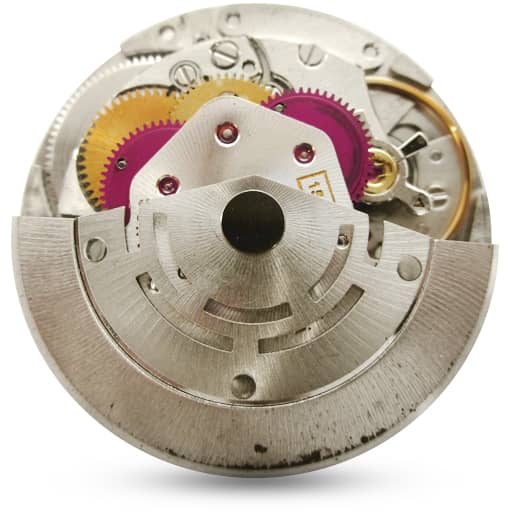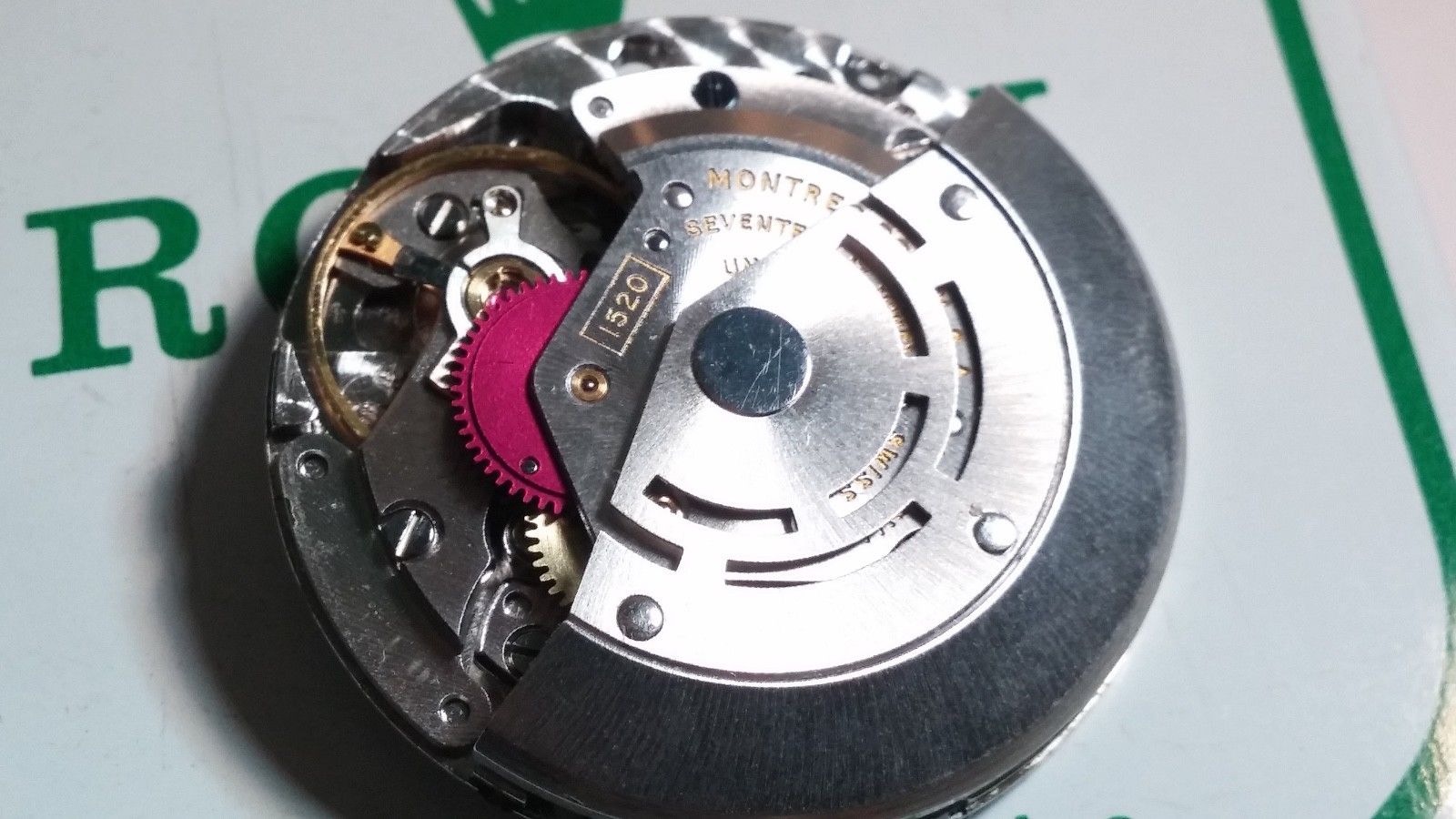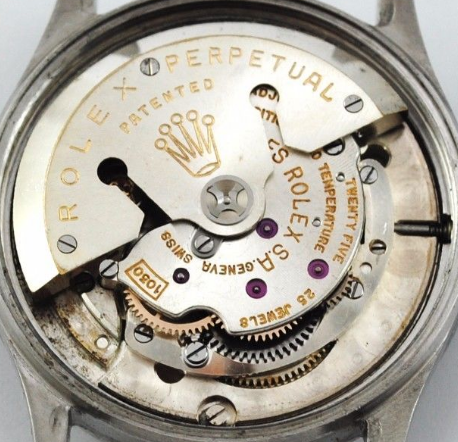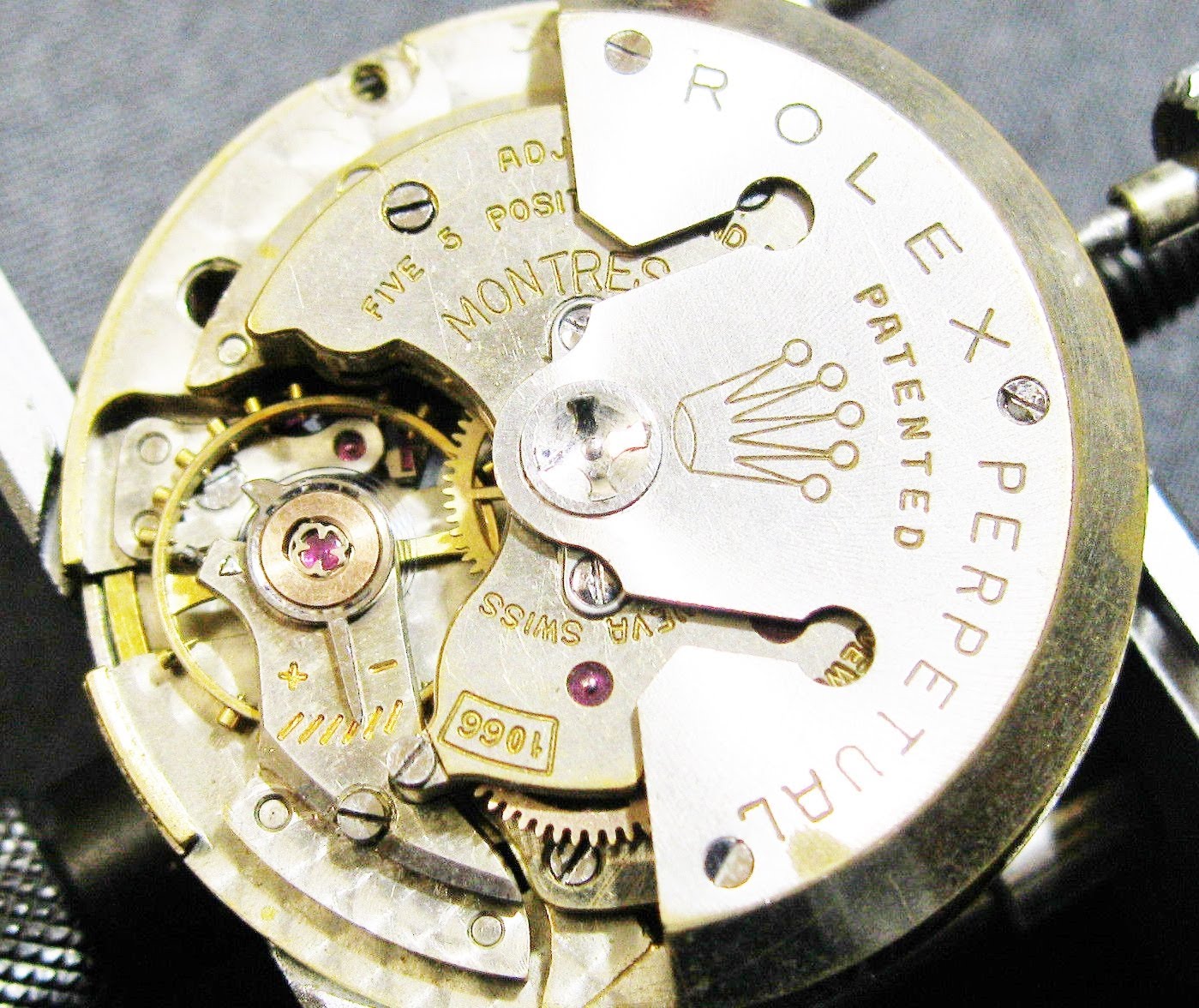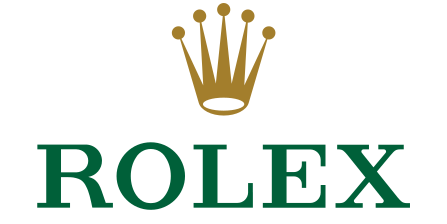History: In 1963, in a curious and extremely un-Rolex-like move, the Cal. 1530 started its own process of being phased out. Rolex replaced it by the less advanced Cal. 1520. As the numbers suggest, it represented something of a backwards step for the usually progressive thinking company.
It was centered on the same architecture as the Cal. 1530, and shared an identical base plate. However, it had several key differences, many of which were designed to keep its manufacturing costs to a minimum.
Rolex only produced it with a stick regulator, rather than with the Microstella system that had found its way onto the departing 1530 by the end of its run. The Breguet overcoil of the majority of Rolex’s output was substituted for a traditional flat hairspring, and it was originally released as a 17-jewel movement, although 25 and 26-jewel versions joined the range later in the production cycle.
It was centered on the same architecture as the Cal. 1530, and shared an identical base plate. However, it had several key differences, many of which were designed to keep its manufacturing costs to a minimum.
Rolex only produced it with a stick regulator, rather than with the Microstella system that had found its way onto the departing 1530 by the end of its run. The Breguet overcoil of the majority of Rolex’s output was substituted for a traditional flat hairspring, and it was originally released as a 17-jewel movement, although 25 and 26-jewel versions joined the range later in the production cycle.
Manufacturer: Rolex SA (/ˈroʊlɛks/) is a Swiss luxury watchmaker. The company and its subsidiary Montres Tudor SA design, manufacture, distribute and service wristwatches sold under the Rolex and Tudor brands. Founded by Hans Wilsdorf and Alfred Davis in London, England in 1905 as Wilsdorf and Davis, Rolex moved its base of operations to Geneva, Switzerland in 1919.
Forbes ranked Rolex 64th on its 2016 list of the world's most powerful global brands.[Rolex is the largest single high end watch brand. The company is owned by the Hans Wilsdorf Foundation, a private family trust.
Alfred Davis and his brother-in-law Hans Wilsdorf founded Wilsdorf and Davis, the company that would eventually become Rolex SA, in London, England in 1905. Wilsdorf and Davis' main commercial activity at the time involved importing Hermann Aegler's Swiss movements to England and placing them in high-quality watch cases made by Dennison and others. These early wristwatches were sold to jewellers, who then put their own names on the dial. The earliest watches from Wilsdorf and Davis were usually hallmarked "W&D" inside the caseback.
From Wikipedia
Alfred Davis and his brother-in-law Hans Wilsdorf founded Wilsdorf and Davis, the company that would eventually become Rolex SA, in London, England in 1905. Wilsdorf and Davis' main commercial activity at the time involved importing Hermann Aegler's Swiss movements to England and placing them in high-quality watch cases made by Dennison and others. These early wristwatches were sold to jewellers, who then put their own names on the dial. The earliest watches from Wilsdorf and Davis were usually hallmarked "W&D" inside the caseback.
From Wikipedia
Item Links: We found: 1 different collections associated with Automatic - Rolex 1520
- Collection Rolex: 5 different items.
Item created by: gdm on 2018-09-28 19:31:30. Last edited by gdm on 2018-10-16 19:09:33
If you see errors or missing data in this entry, please feel free to log in and edit it. Anyone with a Gmail account can log in instantly.
If you see errors or missing data in this entry, please feel free to log in and edit it. Anyone with a Gmail account can log in instantly.


